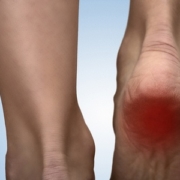How to Find the Right Podiatrist
In the New Year, you’re bound to be busier than ever. Between all of your appointments, New Year’s resolutions to get to the gym, bouncing between meetings at work, your feet and ankles are going to be in for it! This is a great reason to get a head start on finding a podiatrist that’s right for you. Considering there are 26 bones in our feet, there’s a lot to take care of when it comes to the parts of our bodies that carry us around all day. Nearly 8 out of 10 people in the United States alone experience foot pain, yet only one-third of those people will see a podiatrist. At Carrollton Foot Center, PLLC, keeping your feet ahead of the statistics is easy.
How do you know if a podiatrist is the best option for you?
- Step trackers – Did you get a step or fitness tracker this year? Have you been regularly using it? Studies show that those who actively try to get in more steps each day are more likely to benefit from seeing a podiatrist annually. Higher levels of activity can quickly lead to foot or ankle issues if problems go untreated for too long.
- Self-care is unsuccessful – Like most people, you might opt for do-it-yourself strategies to remedy foot and ankle pain before seeking a foot doctor. When buying over-the-counter insoles doesn’t help your heel pain or nightly foot soaks won’t relieve a stubborn infected toenail, it’s time to see a podiatrist.
- See into the future – Many people who have relatives that suffer from foot or ankle pain or discomfort, especially their mother or father, should be concerned about the hereditary nature of their foot and ankle issues. If your dad has bunions, and your aunt on your mother’s side has bunions as well, your chances of developing bunions are high! Prevention is key and possible only by seeing a podiatrist.
With advanced treatments available at Carrollton Foot Center, PLLC, like shockwave therapy and Keryflex technology, we’re bound to be the right fit for your feet. Call us today at (469) 998-3668 to schedule an appointment with Dr. Lilly Khavari in Carrollton, Texas.















